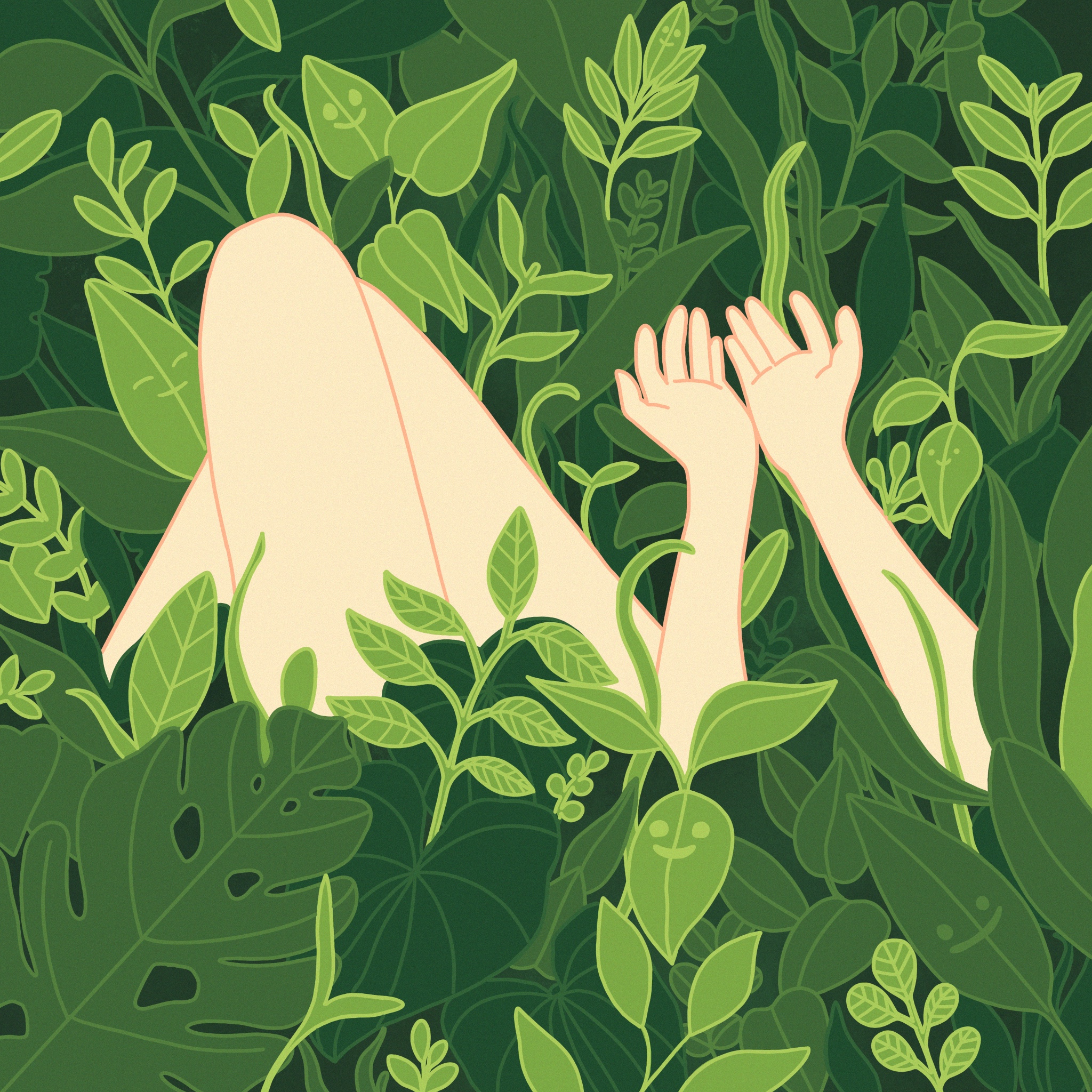Planting green study spaces around campus could improve students’ mental health

(Nicole Anisgard Parra/Illustrations Director)
By Srikanth Raguraman
April 23, 2019 10:46 p.m.
Hold off on the hacksaws and gravel trucks – because grass is here to stay.
In the wake of a “megadrought” and drying water reserves, California has taken a liking to ripping out the green and planting succulents in its stead. Angelenos were famously upset when Beverly Hills residents insisted on maintaining lavish green lawns in the peak of the recent drought.
There are unintended effects of this environmentalism, though. UCLA researchers found in a study published in March that green areas in urban environments can improve people’s mental well-being. The study found a correlation between increased greenery and increased mental stability among teens.
In other words, UCLA loses more than just grass when it goes green.
Some in UCLA seem cognizant of this. Nurit Katz, the university’s chief sustainability officer, said the UCLA Sustainability Committee has devoted manpower and money to identify underused areas on campus and transform them into study spaces furnished with greenery and drought-tolerant plants. Katz and her team have identified multiple locations, but landscaping hasn’t started at all spaces, and these projects have gone largely under the radar.
This comes at a time when UCLA has proven woefully incapable of fixing its Counseling and Psychological Services center and administrators are unable to provide high-quality mental health support for students. Mental health problems have reached new levels of crisis at UCLA and these green spaces represent an indirect effort aimed at alleviating some of the factors that contribute to student-life pressures.
The university needs to embrace, prioritize and expedite these kinds of secondary efforts to improve mental health on campus. The UCLA Sustainability Committee has initiatives to infuse the campus with greenery and biodiversity, ultimately benefiting mental health – it’s about time we took note of them.
UCLA students want spaces like these because of how helpful they are, practically and aesthetically. These study spaces feature much more greenery, along with places to sit and relax. They’ll help transform UCLA’s reputation as a concrete jungle gym into one of a more environmentally conscious university.
Shawn Foroushani, a first-year biochemistry student, said South Campus could use more projects like these in particular.
“South Campus is a bit lackluster compared to other parts of UCLA, and it’s no secret that (its) students can struggle with mental health problems,” Foroushani said. “These study spaces should be a priority.”
Hard sciences and engineering departments have been criticized for their underwhelming and unaccommodating support of students in terms of mental health. In fact, CAPS, which is incredibly understaffed, agreed to provide specialized counseling to South Campus engineering students because of rampant mental health concerns.
Small, aesthetically and environmentally pleasing spaces go a long way in improving people’s mental well-being. In fact, a 2014 study found increased foliage is positively correlated with improved stress recovery. The sustainability committee’s study spaces clearly shouldn’t go ignored at a university that traditionally devalues mental health.
“These study spaces sound like they’d be tremendous help to students,” said Zachary Menz, a first-year psychobiology student. “I’m sure most people appreciate the extra space.”
Moreover, UCLA is a campus of more than 45,000 students and having more study spaces matters, given Powell Library and other common study spots on campus are often filled to the brim.
Raqeeb Chang, a first-year business economics student, said UCLA has a responsibility to its students, first and foremost.
“Students should be the focus of UCLA, and mental health is a big problem for a lot of students,” Chang said. “UCLA’s responsibility should be to prioritize projects like these because they’re for the whole community.”
And that’s essentially what these projects are: a love letter from the university to its students and the LA community. These spaces benefit the local ecosystem by replacing some plants and planting more. And expediting these initiatives shows that UCLA is actively looking to improve the campus’ mental health at a time when mental health treatment on campus is discouraging, to say the least.
Of course, a key inhibitor to planting more greenery and being more environmentally conscious is the limited water supply, especially given the recent drought. Projects like these can seem to suck water away and further desertify California. However, the sustainability committee has transformed these landscapes primarily using drought resistant plants that naturally require less water to thrive while employing sustainable techniques for maintaining grass on campus.
So let’s pause for a second with the concrete and cement. Greenery just might be able to make a comeback.


